Hailed by fans and players as one of the best Tests ever played, Ireland's Six Nations win over France had a grand total of five scrums.
Take out the freak incident in which James Lowe hit the spidercam at the start of the game and you have four.
Just imagine a World Rugby focus group looking at that game, which featured ball-in-play time of 46 minutes and 10 seconds. Recommendation: more of this please.
That figure of five is way below the average, which since 2017 has been around the 12-13 mark, according to RugbyDome figures, which didn’t count scrum resets.
While not typical, it does illustrate a wider trend in the game, which appears to suggest that the scrum is becoming less important than it once was.
A wider analysis, tracing back the numbers from the inaugural World Cup, shows a stark decrease in the set-piece.
The 1987 tournament had an average of 32 scrums per game, it was 22 in 2003 and 14 in 2019, as per StatsPerform.
Of course, the game entered the professional era over that period and the dynamic and purpose of the scrum changed, in general, from restarting the play to trying to win a penalty.
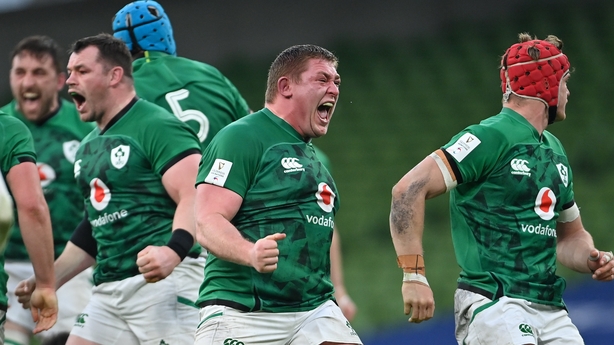
The engagement and power generated in the scrum today make those from the past look almost unrecognisable.
There are many reasons why there are fewer scrums.
These include an increase in skill levels that professionalism brought, better pitches and covered stadiums all combined to lower the number of handling errors, while various rule changes and game trends further reduced the amount of scrums.
The almost immediate referee’s call of 'advantage over’ following a opposition kick, no matter the quality, in a knock-on advantage has been a feature over the last decade or so; the tendency of referees to allow a ruck to develop for a few more seconds when it looks likely the ball will be playable soon has also meant fewer scrums.
World Rugby is very conscious of their overall product and the need to draw in more viewers. Endless scrum resets, they feel, are not the way to go.

"I don’t understand when people complain about 10 scrums in a row. I think it’s great: a game within a game, let’s see who wins that," Mike Ross (above right) tells RTÉ Sport.
It’s no surprise that the former Leinster and Ireland tighthead, who retired in 2016 with two Six Nations titles and two Champions Cup medals to his name, is a fan of the scrum.
Ross was practically an immovable object at the cornerstone of the Irish pack over 61 caps from 2009 until he stepped away.
So, naturally enough, the law brought in at the start of last season, when a player is held up over the opposition line resulting in a goalline dropout, as opposed to a five-metre scrum, is not popular in the Ross household.
"I don’t like that five-metre rule. If you get over the line you should be rewarded for it, you shouldn’t lose possession," he argues.
"You’ve been doing something positive, you’ve been attacking, you worked hard to get over the line, why should it be kicked halfway down the pitch because of it.
"Maybe they brought it in to stop five minutes of reset scrums, which sometimes results, but I like those things," he adds with a smile." "I enjoy the tension."
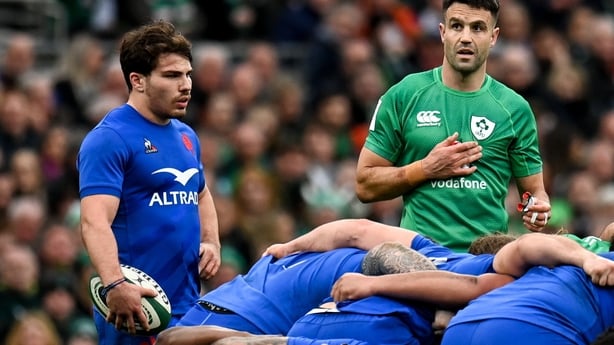
While he understands the rationale of keeping the game flowing, the Corkman is wary of what might be lost if the higher-ups begin to see the scrum as a nuisance.
"Rugby is a game for all shapes and sizes and there has to be a role for everyone in the sport," says the 43-year-old.
"I mean that’s what got me into it in the first place. My skillset, which was pretty much useless in hurling and football, was valued in rugby.
"If the scrum remains important then you have to have guys who are good at scrummaging, and a lot of those guys are big guys, probably not the most mobile so having those guys on the pitch to do that job then becomes an opportunity for other guys to run around them.
"You have to be careful how you tinker with it.
"Scrums are tough so if you’ve got a prop who has had to do multiple scrums, that’s a tired prop and again that will create a hole in defence.
"I remember every time we played Glasgow or Scotland, Stuart Hogg looking for me in the line, you know."
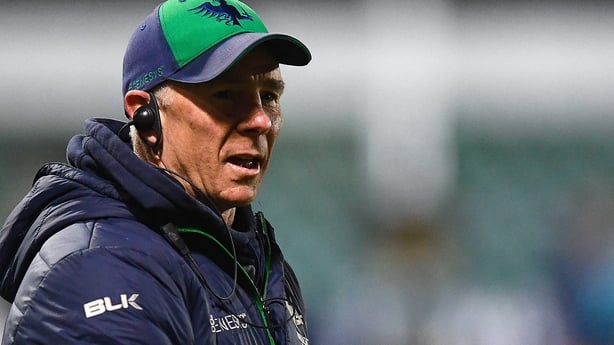
It’s a sentiment that Connacht boss Andy Friend agrees with.
"We need that, we need that body type to be playing the game of rugby," he says.
"I do think the focus on having the ball in and the ball out and playing, that’s a favourable thing for the game.
"If you’ve got a dominant scrum you will be rewarded but ideally it’s to restart play – get the ball in and get the ball out and get playing.
"I’d be hesitant to say that [scrum is less important] because you are always going to need a powerful scrum at the top level.
"If there’s six [for each team] in a game and you can’t handle a scrum, there’s potentially 12 penalties against you, so you’ve got to be able to have the players that can manage at the top level."

Another recent trend, which isn't related to a law change but has come into fashion is the tap penalty.
The logic used to be that calling a scrum after the award of a close-range penalty would tie up eight defenders and create more space but, that's just the theory, it doesn’t always work in practice.
With the quality of players available, Leinster rarely fail to break even at the scrum but that hasn’t stopped them from leading the way with the tap penalty.
"You are more in control of the outcome," reasons Stuart Lancaster, senior coach at Leinster, who again last night scored a try off a planned move in their win over Edinburgh.
"The 50-50 on the scrum, the referee interprets it one way, you interpret it another.
"As opposed to a tap penalty five metres out and you’ve got the different ways which you can attack off the back of that. It’s hard to defend.
"Leinster have scored some good tries off the back of it, so you are a bit more in control of the outcome."
🔵 @leinsterrugby with a try straight from training ground! 🤓#BKTURC #URC | #EDIvLEI pic.twitter.com/1OYhqGoTHm
— BKT United Rugby Championship (URC) (@URCOfficial) March 4, 2023
"There is a bit of a dice roll involved, you could engage and collapse and through no real fault the referee could just see something he doesn’t like, it does take the risk out of it," says Ross, who admits that the erstwhile rarely used tap penalty adds to the game.
"I do like seeing those moves. It’s like watching the Barbarians sometimes, they were the last of the teams to do them and it’s good to see them back in vogue.
"[There’s weren’t many in my day]. I remember doing it once or twice."
A World Rugby analysis of the 2022 Six Nations suggests that the numbers back up the rationale for opting against the scrum.
Where once scrum possession led to 20% of tries scored, it had dropped to 11% in that year.
Strikingly, when the match where Italy were unable to contest scrums against Ireland due to losing front row players was removed from the equation, the rate fell to 5-8%.
Their overall analysis revealed that one in 30 scrums produced a try, while one in three resulted in a penalty (hello South Africa).
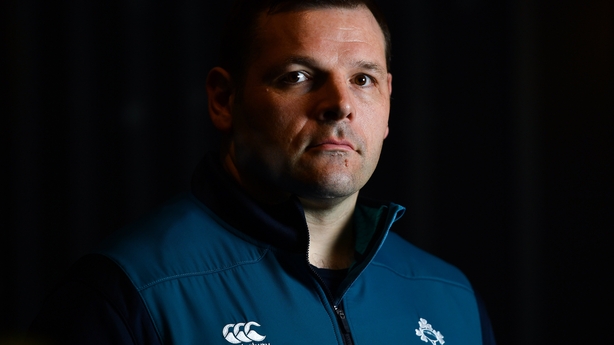
Back in Ross’s day, there was little expectation on a prop forward to do much more than fulfill his set-piece, ruck, maul and tackling duties.
That's not the case these day with a reduction in the number of scrums. Yesterday afternoon, Ross's former team Leinster had one scrum in the opening 35 minutes.
There were just two in the first 32 minutes of the second half in Connacht's victory over Dragons. Props now have to do more to justify their existence.
Now, as Ireland fans have witnessed first hand over the last few seasons, athletes like Cian Healy, Tadhg Furlong and Finlay Bealham are well aware of that.
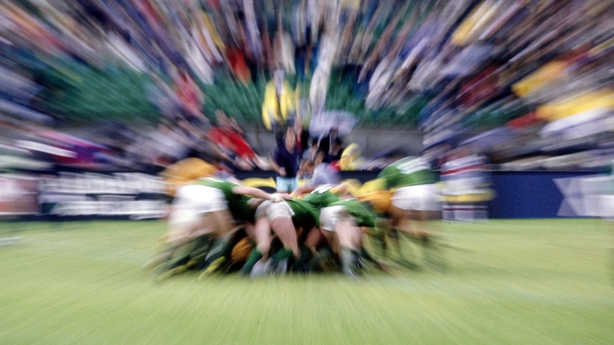
"Props are not just big lumps of meat holding up the scrum," says Friend.
"There’s a lot of skill in their game, whether that be work rate, a subtle pop pass skill, the ability to jackal, chop-tackle ability, all the rest of it.
"Those blokes have enormous skill now and that’s great for the game and demonstrates the quality of athlete that’s there."
Ross says of the added skillset: "It wasn't one of your core competencies. If you had it, it was nice to have. There were plenty of props who could do it. Cian Healy would have been a stand-out back in the day, for his all-court game.
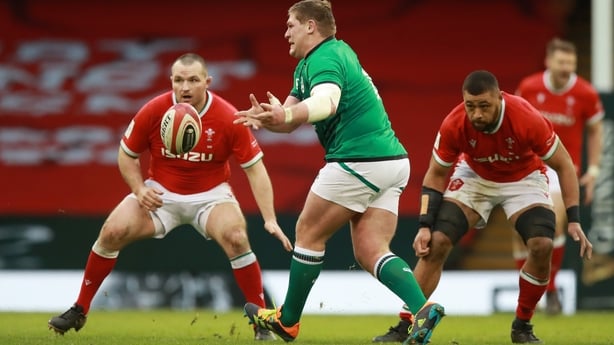
"We are lucky that we have props of that ability, like Tadhg (above), Finlay, Andrew Porter.
"Kyle Sinckler is pretty good at it. It’s something that has been added to the skillset over the last 10 years, particularly as teams are doing more mini plays, the pod in midfield where the ball-carrier can tip it on to a guy outside or pull it back to a 10. There’s more of that in the game."
The scrum remains a unique and integral part of the game and sets it apart from other codes, like League and sevens, where it’s little more than a token push to restart the game.
However, with fewer opportunities to scrum down the signs are there that teams are looking at them in a new light.







